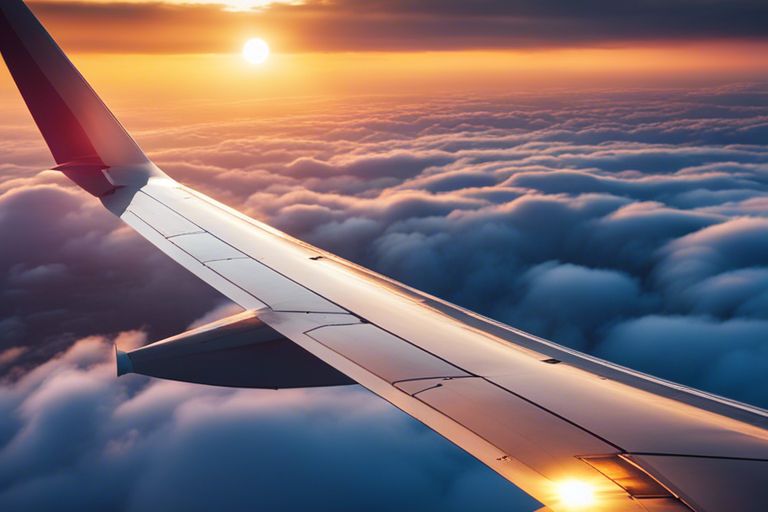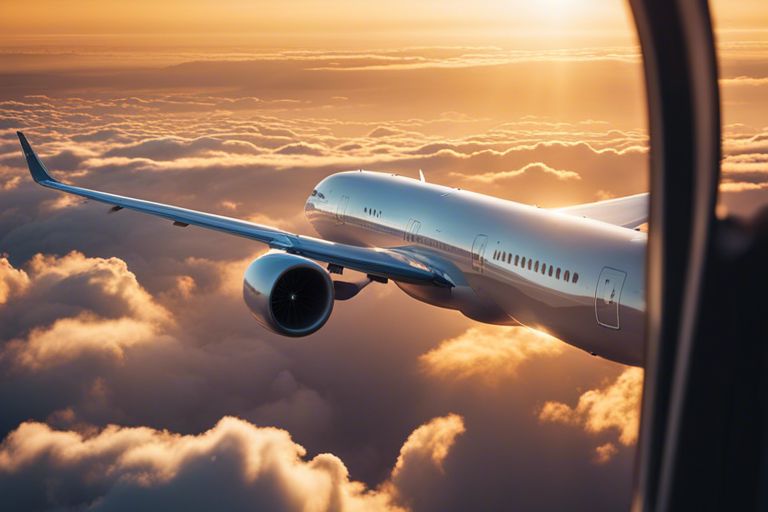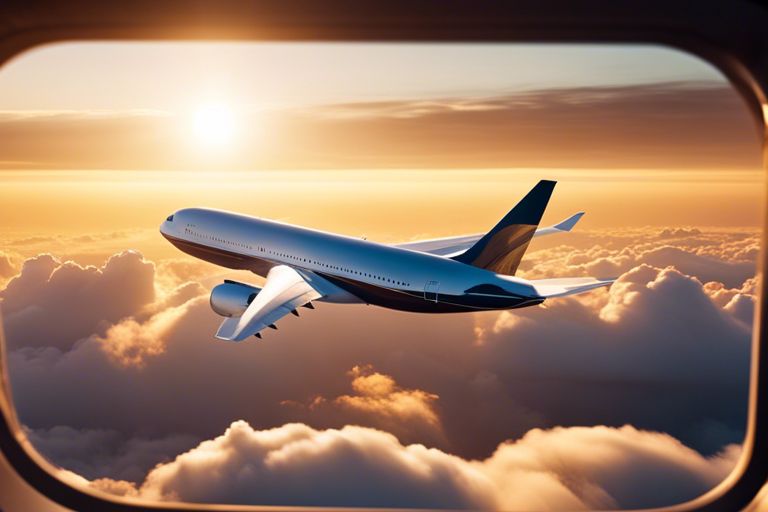Table of Contents
When it comes to traveling, your safety should be your top priority. While there are many modes of transportation available, the airplane stands out as the safest choice for long distance travel. With stringent regulations, advanced technology, and a strong focus on safety, airplanes have proven to be the most secure way to travel from one place to another. In fact, statistically, you are more likely to be involved in a car accident than a plane crash. The stringent training and maintenance schedules for pilots and aircraft, as well as the strict oversight from aviation authorities, contribute to the reliability and safety of air travel. So, next time you’re planning a trip, feel confident knowing that you are choosing the safest mode of transportation by opting for a plane ride.
Key Takeaways:
- Advanced Safety Features: Airplanes are equipped with advanced safety features such as cockpit voice recorders, flight data recorders, and automated systems that reduce the risk of human error.
- Rigorous Maintenance Standards: Airlines follow strict maintenance protocols to ensure that their aircraft are in top condition, minimizing the risk of mechanical failure.
- Rigorous Pilot Training: Pilots undergo extensive training and must adhere to strict regulations, making them well-equipped to handle a wide range of emergency situations.
- Regulatory Oversight: The aviation industry is heavily regulated, with government agencies closely monitoring and enforcing safety standards for both aircraft and crew members.
- Redundant Systems: Airplanes are designed with redundant systems, such as multiple engines and backup navigation systems, to ensure that critical components have backups in case of failure.

Historical Safety Records
One important factor to consider when discussing the safety of air travel is its historical safety records. Despite the common misconception, air travel is not only the fastest but also the safest mode of transportation. According to a study titled “Air Travel is Far Safer Than You Think: Here’s Why”, the aviation industry has made significant progress in improving safety over the years.
Accident Statistics by Mode
When comparing accident statistics by mode of transportation, you’ll find that air travel has the lowest fatality rate per billion passenger miles. This means that you are less likely to be involved in a fatal accident while traveling by airplane than by car, train, or any other mode of transportation. Despite highly publicized aviation accidents, the overall safety statistics for air travel are reassuring.
Advancements in Aviation Safety
Advancements in aviation safety have contributed to the overall safety of air travel. From improved aircraft design to enhanced pilot training and advancements in air traffic management systems, the aviation industry has continuously worked to mitigate potential risks and enhance safety measures. For example, the introduction of advanced safety technologies such as collision avoidance systems and improved aircraft materials has significantly reduced the likelihood of accidents.

Aviation Safety Measures
While there are always risks associated with any form of transportation, the aviation industry has implemented a number of safety measures to ensure that air travel remains the safest mode of transportation. These measures include stringent regulations, innovative aircraft design, pilot training and expertise, and advanced air traffic control systems.
Aircraft Design Innovations
Advanced aircraft design innovations have significantly contributed to the safety of air travel. Modern aircraft are equipped with state-of-the-art technology, including collision avoidance systems, enhanced structural designs, and redundant safety features. These innovations are designed to mitigate potential risks and ensure the safety of passengers and crew.
Stringent Regulations and Standards
The aviation industry is subject to rigorous regulations and standards imposed by national and international aviation authorities. These regulations cover every aspect of flight operations, aircraft maintenance, and safety protocols to ensure that the highest standards are maintained. Compliance with these regulations is mandatory to uphold the safety of air travel.
Pilot Training and Expertise
Ensuring the competency and proficiency of pilots is paramount to aviation safety. Pilots undergo rigorous training and recurrent evaluation to maintain their skills and knowledge. The extensive training programs and experience requirements are designed to ensure that pilots are prepared to handle any situation that may arise during a flight, contributing to the overall safety of air travel.
Air Traffic Control Systems
Advanced air traffic control systems play a crucial role in managing and monitoring air traffic to prevent collisions and maintain safe distances between aircraft. These highly sophisticated systems utilize radar, satellite technology, and communication networks to provide real-time information and guidance to pilots, ensuring the safe and orderly flow of air traffic.
Comparative Risk Analysis
After considering various forms of transportation, it’s clear that when it comes to safety, airplanes are the safest mode of travel. This statement might come as a surprise to many, especially those who have a fear of flying. However, when you analyze the comparative risk of traveling by airplane versus other forms of transportation, the statistics speak for themselves.
Comparing Transportation Fatalities
When you compare the fatality rates of different modes of transportation, the statistics reveal a clear picture. According to the National Safety Council, the risk of fatality per billion passenger miles for commercial air travel is 0.07, compared to 7.28 for cars and 212.60 for motorcycles. This stark contrast highlights the significant safety advantage of flying in an airplane over other modes of transportation. In fact, you are over 100 times safer flying in an airplane than traveling by car.
Perception vs. Reality in Transportation Safety
Despite the overwhelming evidence that flying is the safest mode of transportation, the perception of airplane travel still varies greatly from its reality. The fear of flying is often fueled by media coverage of rare aviation accidents, creating a skewed view of the actual risks. Understanding the real statistics and the rigorous safety measures in place can help you overcome any unfounded fears and allow you to fully appreciate the safety of air travel.
Technological and Procedural Advancements
Not only has the design of airplanes advanced dramatically over the years, but also the technological and procedural safety measures have constantly evolved to ensure your safety during air travel. From the implementation of advanced weather tracking systems to the development of more efficient and reliable aircraft engines, every aspect of aviation technology has been fine-tuned to provide you with the safest mode of transportation possible.
Future Safety Technologies
In the near future, you can expect to see even more groundbreaking safety technologies being incorporated into aircraft. These may include advanced collision avoidance systems, improved weather prediction technology, and enhanced communication and navigation systems. These innovations will further reduce the already minimal risk of flying, ensuring your safety at every stage of your journey.
Ongoing Safety Protocols and Procedures
While technological advancements play a crucial role in ensuring the safety of air travel, ongoing safety protocols and procedures are equally important. From rigorous maintenance schedules to stringent pilot training and regular safety inspections, every aspect of air travel is subjected to the highest standards and scrutiny to ensure that you can travel with complete peace of mind. Regular updates and improvements in safety protocols follow real-life scenarios and lead to better stress-testing, ensuring that your safety is always at the forefront of the industry’s priorities.
Conclusion
So, in conclusion, it is clear that the airplane is the safest mode of transportation. With strict regulations, rigorous training for pilots and crew members, advanced technology, and regular maintenance and inspections, your safety is always the top priority when you fly. Additionally, the industry continually learns from past incidents and uses that knowledge to improve safety measures. When you step on an airplane, you can have confidence in the extensive safety measures in place that make flying the most secure way to travel.
FAQ
Q: Why is the airplane considered the safest mode of transportation?
A: Airplanes are considered the safest mode of transportation due to a combination of factors. Firstly, commercial aircraft undergo rigorous maintenance and safety checks, often exceeding the standards of other modes of transportation. Additionally, pilots and crew receive extensive training and adhere to strict regulations, ensuring optimal safety measures are in place. Furthermore, advancements in technology, such as radar systems and weather forecasting, enhance the safety of air travel. Statistically, flying is considerably safer than driving or even walking, making it the preferred choice for long-distance travel.
Q: What measures are in place to ensure the safety of air travel?
A: Several measures are in place to ensure the safety of air travel. Regular maintenance of aircraft is conducted to identify and address potential issues before they become safety hazards. Additionally, pilots undergo recurrent training to keep their skills sharp and stay updated on safety procedures. Air traffic control systems help monitor and direct aircraft, reducing the risk of mid-air collisions. Moreover, strict regulations and guidelines set by aviation authorities aim to maintain the highest safety standards across the industry, from aircraft manufacturing to flight operations.
Q: How do advancements in technology contribute to the safety of air travel?
A: Advancements in technology have greatly contributed to the safety of air travel. The implementation of modern navigation and communication systems allows for more precise flight planning and real-time updates on weather conditions, ensuring pilots can make informed decisions to avoid potential hazards. Enhanced aircraft design and construction using advanced materials and engineering techniques have also improved overall safety. Additionally, the development of sophisticated safety features, such as automated warning systems and advanced cockpit instrumentation, adds an extra layer of protection for both passengers and crew.

